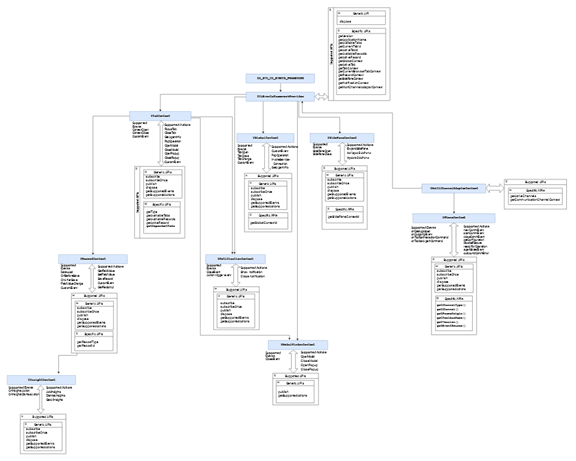Get the Corresponding Context for the Use Cases
Once you get the instance of the IUiEventsFrameworkProvider you can
now choose the context based on your use cases. The UiEventsFrameworkProvider
has seven contexts which are shown in the following table:
| Context | Description | Topic |
|---|---|---|
| GlobalContext | Enables you to listen to application-level events and perform application-level operations. | IGlobalContext |
| TabContext | Enables you to listen to tab level events. | ITabContext |
| RecordContext | Enables you to listen to all those events or operations related to an object. | IRecordContext |
| SidePaneContext | Enables you to access the SidePane's events and perform actions onsidePane in the Fusion application. | ISidePaneContext |
| ModalWindowContext | Enables you to perform actions on the ModalWindow in the Fusion application. | IModalWindowContext |
| NotificationContext | Enables you to perform Notification actions and events in the Fusion application. | INotificationContext |
| InsightsContext | Enables you to perform Insights CCA related actions and events from a particular record context | InsightsContext |
| PhoneContext | Encapsulates the UEF provided telephonic events and actions. | IPhoneContext |
| EngagementContext | This object will encapsulate the tabContext in which the new call connection has been established, which means the user can get control over the objects being opened by that call connection. | IEngagementContext |
| MultiChannelAdapterContext | Third party applications can use to enable real time communications over phone, chat, and so on. | IMultiChannelAdaptorContext |
| ToolbarContext | Enables you to access the MCA toolbar for its configuration. | IToolbarContext |
| Smart Action Context | Enables you to start smart actions on a smart action enabled page. | Smart Action Context |
All the extensible events and actions of the UI Events Framework are supported on top of contexts like GlobalContext, TabContext and RecordContext. The following diagram shows the hierarchy of these contexts maintained in the framework along with the supported events, actions and APIs supported in each of the contexts. The sections which follow explain each context in detail.
